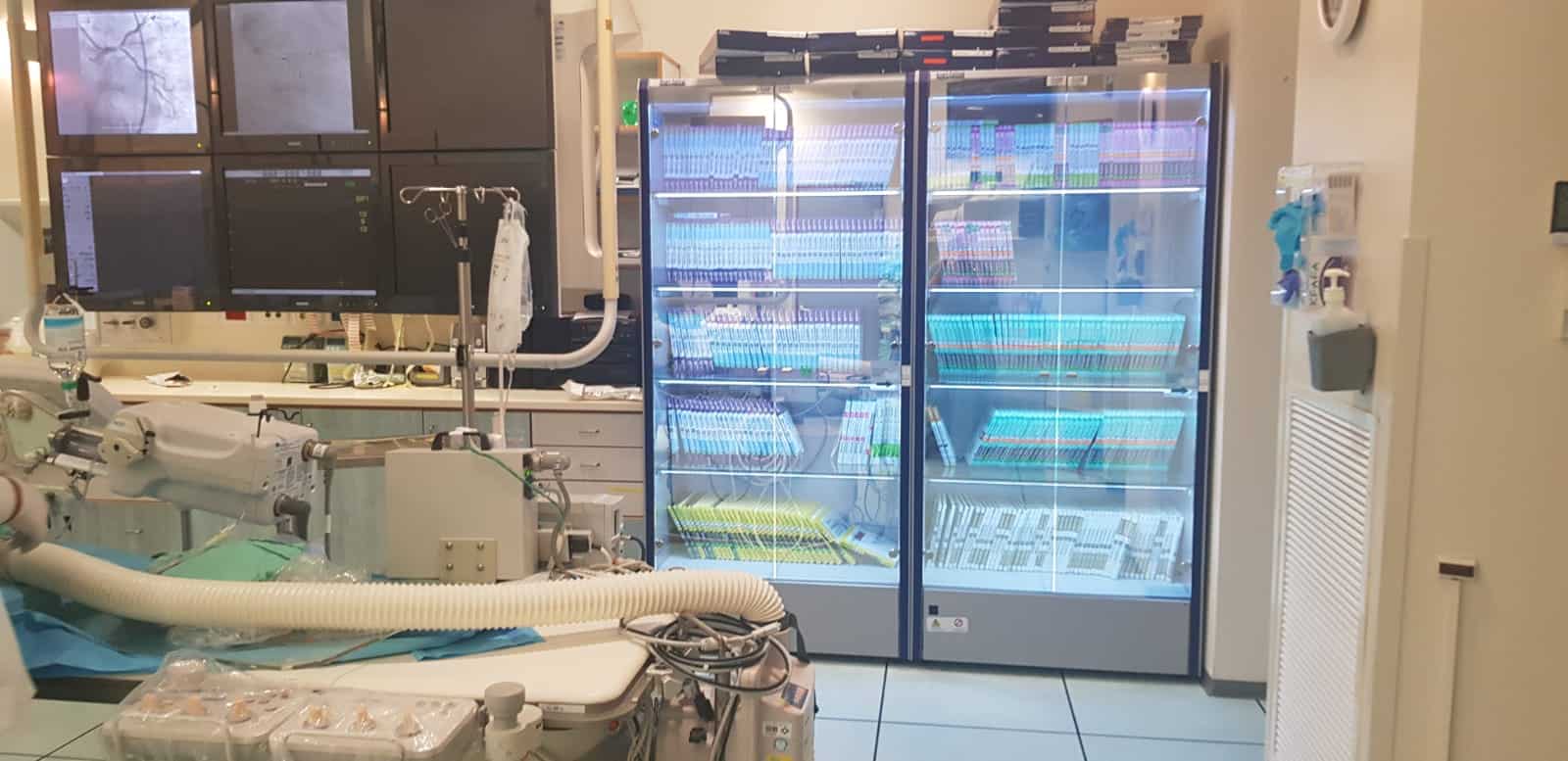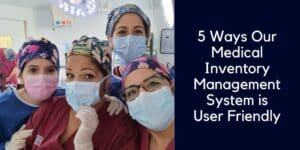What’s inside:
This blog will cover:
- The findings of the American College of Healthcare Executives annual survey of hospital CEOs.
- The challenges currently being faced by healthcare leadership.
- How new healthcare technology can be part of the fight-back against workforce and financial pressures.
Top challenges for hospitals
The American College of Healthcare Executives (ACHE) has published its annual survey of the top issues confronting hospitals in 2022.
The ACHE 2022 annual survey lists workforce challenges as the biggest pressure, with financial challenges ranking second.
Some of the specific issues cited include:
| Biggest Challenges for Hospital CEOs in 2022 | Percentage of CEO’s concerned with the issue. |
| Shortages of registered nurses | 90% |
| Increasing costs for staff, supplies, etc. | 89% |
| Burnout among non-physician staff | 80% |
| Reducing operating costs | 66% |
| Revenue-cycle management (converting charges to cash) | 43% |
These are obviously complex challenges, but healthcare leadership will be looking to take action to lessen their impact over the coming year – and technology will be a key element in many initiatives.
Let’s take a look at the role of technology in dealing with some of the biggest issues facing healthcare providers.
The role of technology in coping with nursing shortages
While the rising cost and scarcity of professional healthcare staff is being discussed and navigated, there is a secondary issue that also needs attention. Many hospital departments are understaffed and rely on travel nurses to supplement the workforce. These contracted nursing staff are now a common fixture in most healthcare settings. According to recent data on travel nursing in the US, there was a 35% growth rate in 2020, and this type of nursing arrangement is forecast to grow by an additional 40% in the coming years.*1.
With a reduced workforce which includes transient contractors, (who are less familiar with the organization and its systems, and therefore require support), staff are feeling additional pressures that are affecting morale.
The ACHE survey highlighted that 80% of CEOs worried about burnout among non-physician staff. So how can healthcare leadership reduce the burden on busy nurses and prevent further resignations?
Reducing the burden on nurses in the surgical setting
In surgical areas, where every second counts, many healthcare providers are looking to streamline their workflows. Their main aim is to simplify tasks which are overly complex and that take nurses away from direct patient care.
Because nurses are responsible for managing medical inventory behind the ‘red line’, they are burdened by the task of item tracking and point of use data-collection. This task can be slow and frustrating, mainly due to process and system deficiencies.
Surgical charting is another area of frustration. Nurses regularly struggle to chart items using inadequate POU data-capture tools, often resorting to manual workarounds in an attempt to record items.
We are going to take a closer look at how locating and recording inventory is an overly cumbersome task in many healthcare organizations, which can cause frustration and low morale. This situation is actually simple to rectify with the right health-tech solutions.
Implant tracking in surgical spaces
Many healthcare providers store medical devices and implants in a disorganized manner, making it difficult for nurses to find the items they need.
We commonly hear that finding all the medical inventory needed for surgery can take hours. Nurses frequently need to track down missing items needed for surgeries or procedures. While hunting for surgical supplies they could discover stock-outs, or items that have expired on the shelves and cannot be used. They often need to run around to other departments seeking the items they need. All of this takes time.
Many medical devices, implants and consumables are high value-items, so inefficient item tracking can cost hospitals dearly.
Lack of inventory vision is a drain on nurse time and also results in inflated costs and wastage.
With 80% of hospital CEOs concerned about staff burnout, and 66% looking to reduce hospital operating costs – improving the efficiency of inventory management in surgical spaces can address both of these issues, by saving both time and money.
Automated inventory tracking in the surgery setting
Introducing RFID smart cabinets into surgical and procedural areas is an instant game changer. Not all cabinets are alike, so care needs to be taken to research the best smart cabinets for medical devices and implants.

Cabinet sensors ensure that staff have a clear overview of the stock at hand and can also track which items were removed from the cabinet. When medical devices, implants or consumables are needed for surgery, nurses know exactly where to locate them.
Another benefit of automation is the data they provide. System reports will help staff to control the medical inventory by identifying items that are close to expiry, so that they can be prioritized for usage. This is a great way to boost patient safety and reduce waste. The system also generates expiry and recall alerts that ensure the removal of unsafe stock items from, preventing accidental consumption.
System data will also underpin procurement decisions, helping to streamline the inventory and reduce expenditure.
When it comes to managing inventory, data is key. Materials management and clinical staff all need to have full inventory vision. But it goes wider than that. Other supply chain stakeholders, such as vendors and distributors can also be given access to the system, ensuring transparency and synergy between supply chain partners.
Why item capture during surgery is such a challenge
43% of CEOs surveyed want to improve revenue-cycle management, in particular they are looking to improve the conversion of charges to into revenue.
According to the HFMA (Healthcare Financial Management Association) as much as 1% of net charges are lost due to charge integrity leakage – others estimate the figure to be as high as 3%.
The point of care is probably one of the most difficult places in any healthcare organization to collect data – but it is also the most crucial.
Accurate utilization records are vital to protect patients, generate revenue and manage inventory. Yet the systems in place are often inefficient and regularly fail to routinely capture, identify and record usage data. Point of use barcode scanning often fails to successfully capture all the data needed and hospital systems may struggle to identify items scanned. Both of these scenarios trigger time-consuming workarounds if documentation is to succeed. The process distracts nurses from patient care and often results in nurses having to undertake documentation after the surgery has ended.
Many hospital systems are far from intuitive, they are known to be clunky, with long-winded data-entry processes. Staff need regular training, and for travel nurses this is a particular issue.
Many nurses feel pressurized and frustrated by their supply chain admin duties, they want to focus on patients not products.
When workflows are lengthy and regularly need to revert to manual workarounds, there is a heightened risk of items remaining undocumented. That means no entry on the patient’s chart and missed items on medical billing.
So, how can hospitals and surgery centers achieve a full digital record of medical device inventory used in surgery?
Charge capture optimization at the point of care
CEOs looking to improve surgical data capture can now use image-recognition technology, which has just been introduced onto the market. This new point of use data-capture tool turns the full, accurate and digital recording of utilization into a simple task.

The computer vision technology is simple to use with minimal training and ensures full and accurate surgical records straight on to hospital systems – ensuring that medical billing is correct, and revenue is optimized.
Effective point of use data-capture technology has the power to streamline workflows, reduce surgical supply chain activity and maximize case income.

The role of technology in improving healthcare performance
Automated inventory management systems are providing improved metrics, reports and data insights that provide managers with the full picture on both their stock at hand and usage data. This crucial information drives decision-making, taking the guesswork out of inventory management and planning.
Healthcare execs have many challenges to face in 2023, but the smart use of new technology could prove to be a simple solution that plays a key role in improving clinical, operational and financial performance.
Find out about automation solutions for medical inventory in healthcare.






